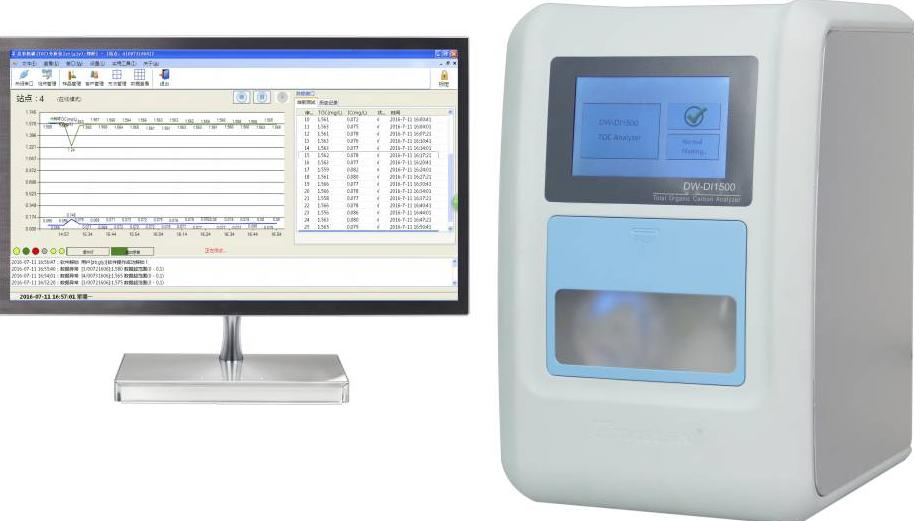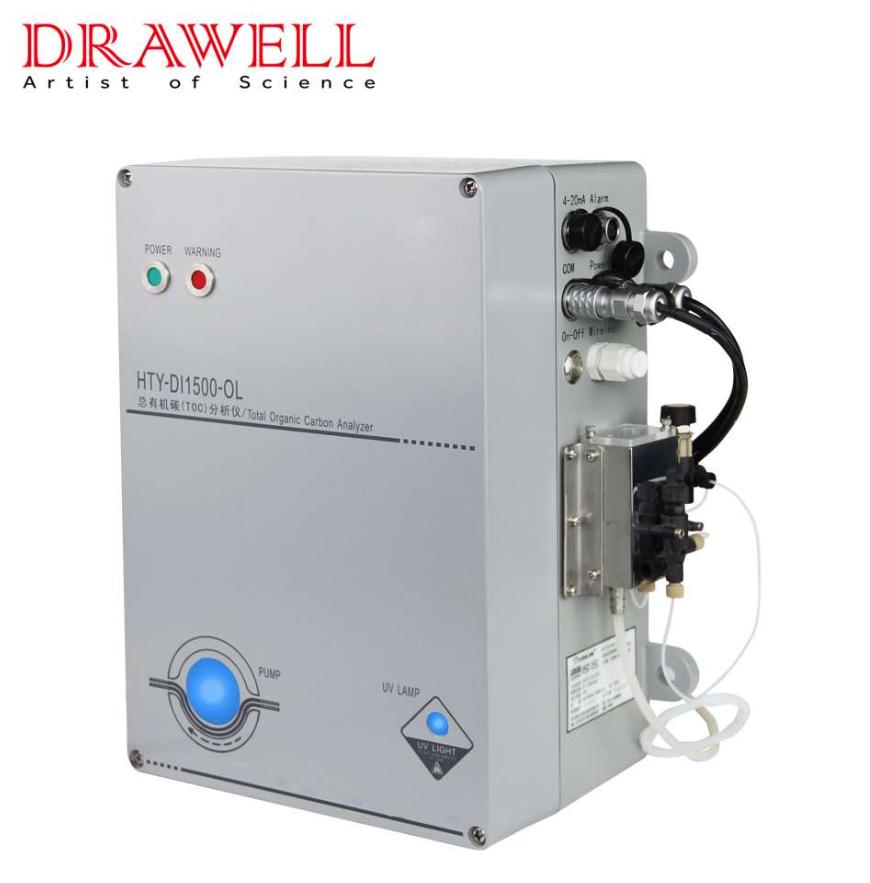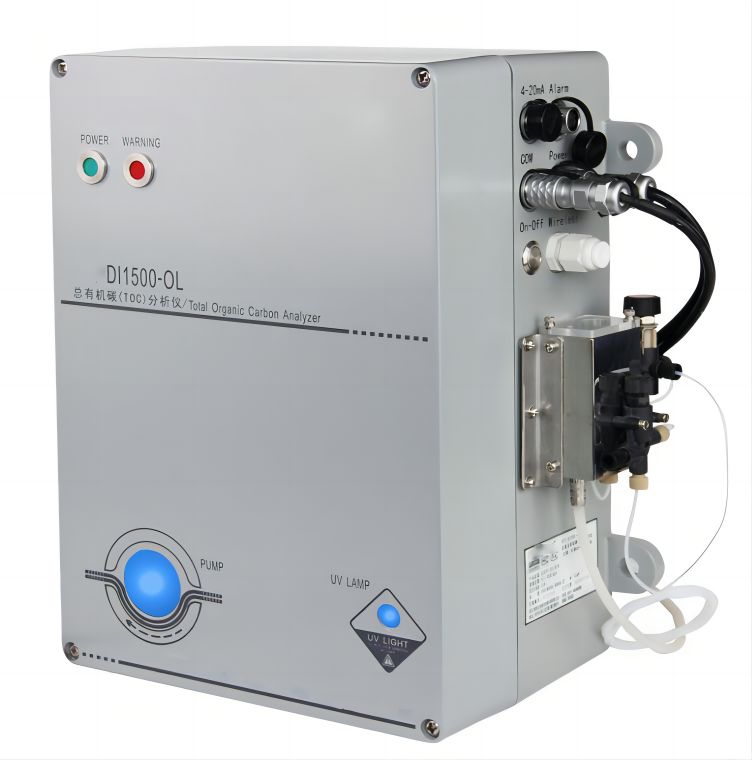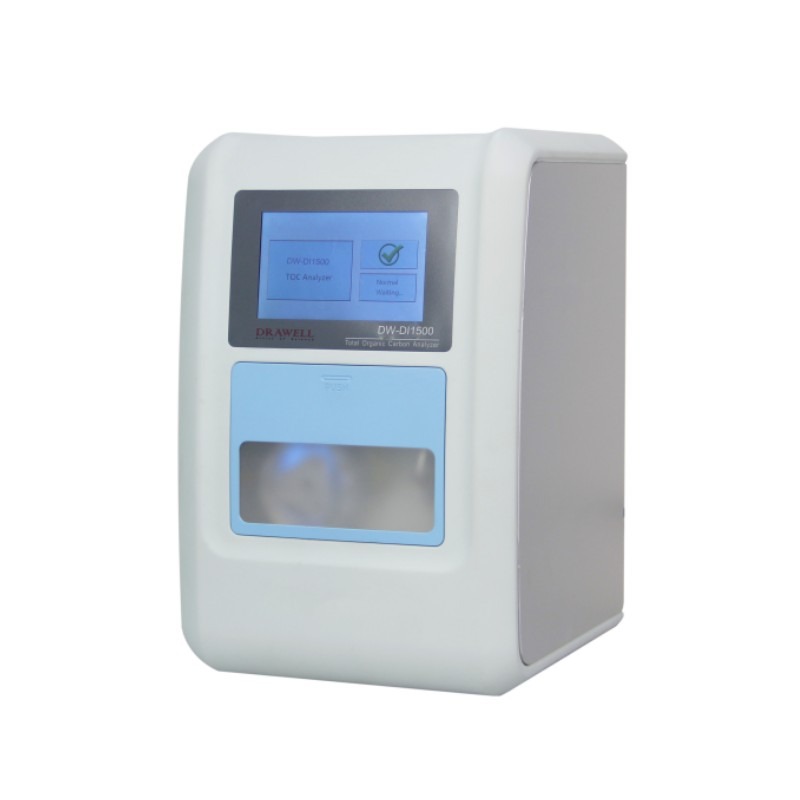Total Organic Carbon (TOC) assessment is an important instrument for analyzing the organic content of water in the field of water quality studies. Total Organic Carbon analyzers provide insights into water purity and pollution levels in environmental monitoring, industrial operations, and pharmaceutical production. In this article, we focus the topic of TOC measurement, exploring the significance of total organic carbon measurement, its principles, applications, and the effective methods used to ensure water safety.

What does TOC Measurement Mean?
Total Organic Carbon (TOC) is the total of all organic carbon compounds found in water. These molecules come from a variety of sources, including plant and animal matter, bacteria, and others. TOC measurement is used as a water quality indicator, assisting in the identification of potential sources of contamination, monitoring treatment procedures, and ensuring compliance with regulatory standards.
What is the Principle of TOC Measurement?
TOC measurement is based on the oxidation principle. Organic carbon molecules are transformed to CO2 via high-temperature burning or chemical oxidation. The CO2 produced is subsequently quantified using several detection methods, yielding a precise measurement of the organic carbon content in the water sample.
What are the Applications of TOC Measurement?
Because of its versatility, TOC measurement is used in a wide range of industries.
Environmental Monitoring
TOC analysis aids in determining the impact of human activities on natural bodies of water. It aids in the monitoring of pollution levels, the tracking of changes in water quality, and the evaluation of the efficiency of pollution management strategies.
Pharmaceutical and Semiconductor Industries
Even minute organic pollutants can interrupt processes or damage product quality in these extremely sensitive industries. TOC analysis guarantees the quality of water used in manufacturing and cleaning procedures.
Drinking Water Treatment
TOC measurement guarantees that organic pollutants are properly removed from drinking water treatment processes, protecting public health.
Wastewater Treatment
Monitoring TOC levels in wastewater aids in evaluating treatment plant performance and identifying potential concerns that may damage the environment after discharge.
Industrial Processes
Water is used as a raw material or for cooling in many industrial operations. TOC analysis assists industries in ensuring that the water they use meets quality standards while not interfering with output.

What are Effective Methods of TOC Measurement?
High-Temperature Combustion (HTC) Method
The high-temperature combustion (HTC) method is a popular method for measuring TOC. A water sample is pumped into a high-temperature furnace or combustion tube that reaches temperatures ranging from 680 to 900°C in this method. Organic carbon molecules are converted to carbon dioxide (CO2) during burning.
UV Persulfate Oxidation Method
The UV persulfate oxidation method works by oxidizing organic carbon molecules with a mixture of UV light and persulfate. The water sample is mixed with a persulfate solution and subjected to UV radiation, which causes the organic carbon molecules to break down into simpler forms such as carbon dioxide. The CO2 produced is subsequently detected by a conductivity detector or a non-dispersive ultraviolet (NDUV) detector. This approach is especially beneficial for samples with low to moderate quantities of organic carbon.
Chemical Oxidation Method
The chemical oxidation method requires adding a chemical oxidant to the water sample, such as potassium persulfate or potassium dichromate. When the oxidant combines with organic carbon molecules, it produces carbon dioxide (CO2). The released CO2 is subsequently measured using various detection techniques, including NDIR, NDUV, or a conductivity detector. Chemical oxidation is a versatile method suitable for a wide range of sample types and concentrations.
Membrane Conductometric Method
The membrane conductometric approach is based on changes in electrical conductivity caused by organic carbon compound oxidation. A water sample is passed across a semi-permeable membrane that selectively permits CO2 molecules to pass in this procedure. The conductivity of the sample changes as the organic carbon in it is oxidized to CO2. This change in conductivity is related to the TOC concentration and is used to calculate the organic carbon concentration.

Comparison and Selection of Methods for TOC Measurement
The selection of TOC measurement method is determined by criteria such as sample type, concentration levels, desired accuracy, and equipment capabilities. Each strategy has advantages and disadvantages.
HTC Method: This approach is useful for a wide range of applications due to its great accuracy and precision. It is particularly effective for samples with high TOC concentrations.
UV Persulfate Oxidation: This method is effective for samples with low to moderate TOC concentrations and yields findings very quickly. However, interference from certain inorganic chemicals may reduce its precision.
Chemical Oxidation: Chemical oxidation is adaptable and effective for a wide range of sample types. However, careful reagent selection may be required to avoid influence from sample matrix components.
Membrane Conductometric Method: This method is ideal for samples with low TOC concentrations and allows for real-time monitoring. However, variations in ionic strength and temperature can have an impact on its accuracy.
Conclusion
Total Organic Carbon (TOC) measurement is a cornerstone in water purity evaluation, assisting industries, communities, and regulators in maintaining safe and clean water supplies in a variety of industries where water quality directly effects operations and outcomes.


